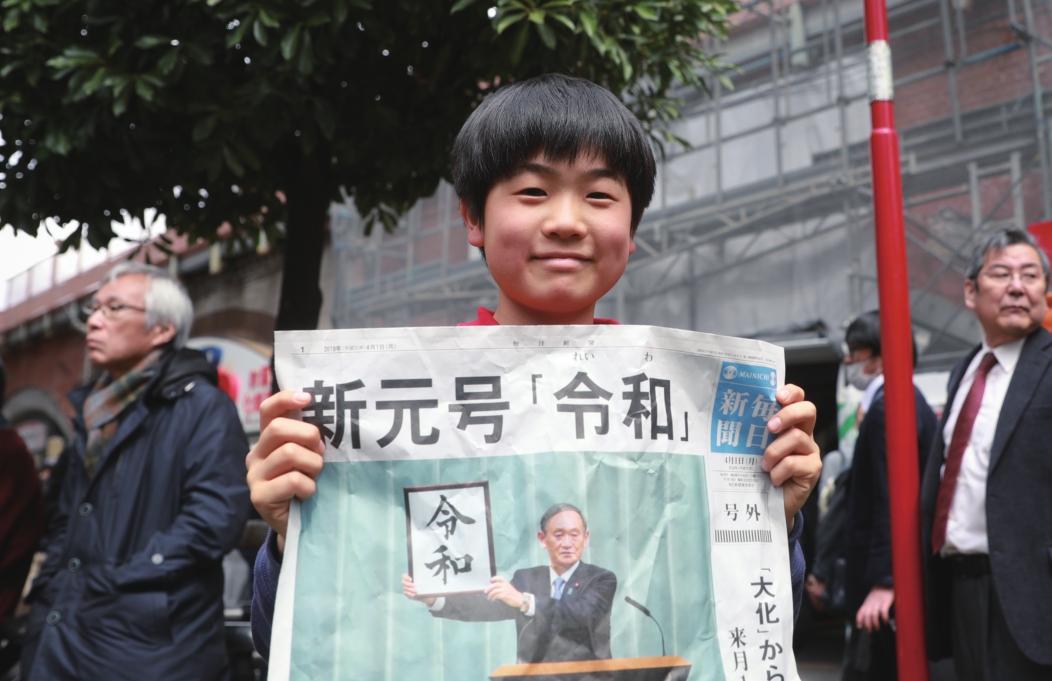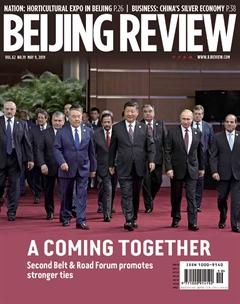End of an Era
By Huo Jiangang

With Japanese Emperor Akihitos abdication on April 30, the three-decade Heisei Era, which started from his accession on January 8, 1989, offi cially came to an end.
The era was preceded by the Showa Era(1926-89) when Japan tried to catch up with developed countries and fi nally achieved the goal. When the Showa Era ended, Japan had reached the peak of its economic development, resulting in the United States taking steps to curb the rising Asian power. The confidence and national pride of the Japanese also reached its peak, the reason why many Japanese cherish the memory of that period.
However, not long after the starting of the Heisei Era, Japans economic bubble burst and it was also caught in the middle of political instability. Japans political, economic and diplomatic landscape entered a stage of reconstruction.
The Japanese mulled over the way forward as not only had the international and domestic conditions changed significantly but also because Japan, which had become an economic power, could not sustain its development model based on the European and the U.S. experience and needed to fi nd its own way.
Economy: momentum lost
The economy is interrelated with diplomacy and politics, serving as the basis. Whether the economy can grow determines if the comprehensive national strength, the most important foundation for diplomacy, can be enhanced. Economic growth is conducive to political stability, while economic downturns often lead to political instability.
Some regarded the first 20 years of the Heisei Era as lost and stagnant. During this period, Japan explored ways to emerge from the aftermath of the economic bubble burst, which undermined the financial environment and dragged the country into recession. In the 1990s, the banking and securities industries suffered greatly, and the negative impact remained until Prime Minister Junichiro Koizumi took power at the beginning of the 21st century.
Japan has undeniable competitive strength in its manufacturing, technology and service sectors. Many Japanese transnational corporations have performed well and overseas investment income has been an important factor supporting the Japanese stock market.
However, during the 30 years of the Heisei Era, the domestic situation for economic growth deteriorated in Japan. The declining birth rate and the increasing aging population led to shrinking markets with insuffi cient demand. The low total factor productivity made the GDP growth sluggish and economic growth weak.
At the end of the last century, the Japanese Government was unable to solve these fundamental problems and borrowed heavily to stimulate the economy. It resulted in soaring government debt, which became double the GDP. Yet the stimulus failed to put Japans economy back on track of normal growth, instead plunging it deeper into crisis.
The focus of the debate in Japan was whether to solve the debt issue fi rst or ignore it and continue stimulating the economy.
Koizumi chose to resolve the fiscal problems first while the incumbent Prime Minister Shinzo Abe stimulated the economy through unprecedented quantitative easing. Although Abes policy did make the Japanese economy look good, it did not solve the fundamental problems including the shrinking domestic market due to the falling birth rate, a shrunken tax base caused by enterprises relocating abroad, and diffi culties in improving labor productivity due to lack of manpower and innovation.
Essentially, Abes means to stimulate the economy was the same as the fi scal stimulus advocated by Prime Minister Keizo Obuchi from 1998 to 2000, and both failed to make the Japanese economy turn into a virtuous circle. Therefore, Abenomics is not the answer to the Japanese economic problem. Quantitative easing itself is an unconventional means rather than a normal one. In the new Reiwa Era under new Emperor Naruhito, boosting the economy still remains a problem of the country.
Diplomacy: U.S.-reliant
The long stagnation of the economy affected Japanese diplomacy significantly. In the early 1990s, the Japanese were ambitious and some even suggested that the U.S., Japan and Europe should rule the world jointly. But this ambition vanished as the economic bubble burst.
In the new international political pattern characterized by the coexistence of one superpower and many powers, Japan wished to play an important role. So it embraced strong diplomatic enthusiasm in the Heisei Era. In the 1990s, Japan sought to become a permanent member of the UN Security Council. It also sought to have the “enemy state” clause removed from the UN Charter.
However, Japans own national strength could not support it to become an international power with discourse power. Therefore relying on the U.S. to reach its goal became an important feature of Japanese diplomacy in the Heisei Era. In the 1990s, Japan and the U.S. revised the Guidelines for Japan-U.S. Defense Cooperation to stabilize and consolidate bilateral ties. Japan has been hoping to make use of the U.S. power to advance its own international standing all the time.
With Japan pursuing becoming a great power, its views on China have changed. How to get along with China has become a controversial issue in Japans diplomacy after the Cold War. The Sino-Japanese relations in the Heisei Era repeatedly suffered ups and downs, partly because of Japans counterbalance of China with the U.S., and more importantly, because Japan considered China as a potential rival geopolitically. The historical and territorial issues between the two countries have always been difficult problems in the bilateral relationship. Apart from the complexity of these issues themselves, Japans tough attitude toward China is also an important reason.
Relying entirely on the U.S and completely becoming its affiliate could make Japan drift further from its goal of becoming a strong country. Therefore, while consolidating the Japan-U.S. alliance, Japan also pursued diplomatic independence from time to time to increase its voice in the international economic and political fi eld.
For example, in the 1990s, Japan attempted to establish the Asian Monetary Fund but was stopped by the U.S. In 2009, then Prime Minister Yukio Hatoyama proposed the creation of an East Asian Community like the European Union. Later, after the U.S. withdrew from the TransPacific Partnership (TPP), a 12-country trade bloc, Abe gathered other members to reach the Comprehensive and Progressive TPP, demonstrating the independence of Japanese diplomacy.
In recent years, with China-U.S. relations witnessing tumult, Abes initiative to improve Sino-Japanese relations is also a manifestation of this relative independence.
Politics: complex situation
Japans politics are closely related to the economy and diplomacy. Though the economic stagnation occurred for various reasons, people tended to attribute it to the incompetence of political leaders. In 1991, after the economy fell into a trough, the shortcomings of the longruling Liberal Democratic Party became the object of public anger, which led to its ouster in 1993.
People hoped for a savior to lead the country out of the predicament and thats why Koizumi was elected prime minister in 2001 even though he was not the most promising leader. When Koizumis successors were unable to perform like he did, they were rejected by the public, with prime ministers changing every year for six consecutive years after Koizumis stepping down.
The political turmoil made people hope for stability and Abenomics created a false prosperity, which has led to Abes continuous governance for more than six years from 2012.
The other important characteristic of Japans politics during the Heisei Era has been the right-wing swing stemming from nationalism. During Japans pursuit to become a global power, the Japanese elite chose to cover up or whitewash historical issues rather than apologize for them. This approach has led to rightwing leaders visiting the notorious Yasukuni Shrine in Japan that honors convicted criminals of World War II despite outcries and caused difficulties for Japan to completely normalize its relations with neighbors. This has adversely affected economic relations with the neighbors.
In the Reiwa Era, whether Japan continues its Heisei Era trajectory or opens up a new path will be significant not only for Japan but for peace and stability in East Asia.

